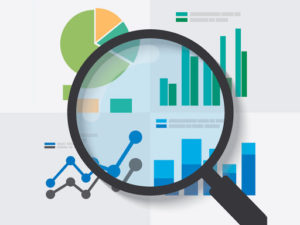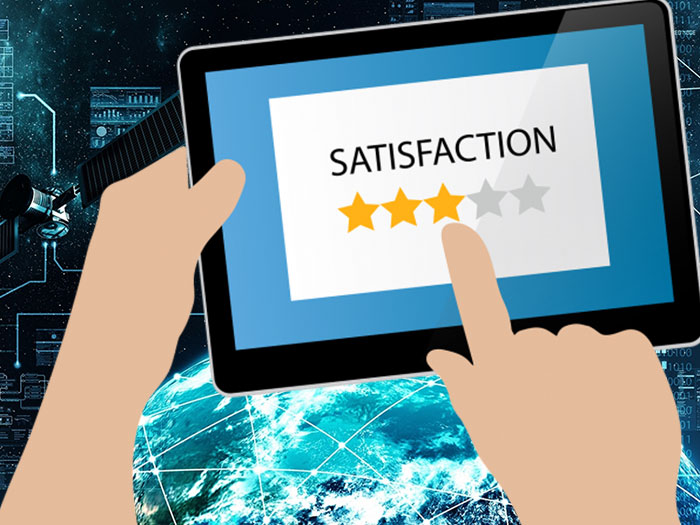A Focus Group Discussion (FGD) is a group discussion used mainly for assessing the gaps identified by companies/ a company to streamline activities with their overall objectives. Assessment derived from FGDs let companies plan future actions. The group’s composition and the group discussion are carefully planned where people are free to talk openly. Participants of this discussion are actively encouraged to express their opinions.
In Pakistan, Ace Research has conducted many Focus Group Discussions in a variety of projects and the main purpose was to extract information from respondents in length. FGD is a handy approach for assessment of clients, consumers and end users of products and services. Development as well as the Corporate sector can seek benefits of FGDs. Retailers, Banking sector, Telco’s, FMCGs can utilize this tool to get an insight about the expectation, perception and value derived by their end users from products and services.
Designing Objective Questionnaire
The research is always based on some objectives and these objectives are in line with problem statements developed after assessing underlying gaps in activities performed by any organization. Research Objective will determine the structure and pattern of the Questionnaire. Therefore, the first and foremost important factor prior to conducting any research activity is assessment of problems followed by preparation of research instrument i.e. Questionnaire. This instrument plays a very vital role in probing factors lurking behind problems identified.
Questionnaire preparation must be carried out with keen eye for events and arguments associated with the problem. Also, previous instruments used for similar researches can be consulted and with little or no modification if it serves the purpose can be utilized
Designing Manual & Script
Once the Questionnaire has been prepared and consent of all research stakeholders have been obtained, the next step is to design a manual for moderators. This manual serves as the guideline for conducting any Discussion in light of the designed questionnaire. This manual helps moderators to assess the required information effectively.
Script is the detailed version of manual which supplements moderator with minute details such as, probing point for open-end questions, outlining theme for each section with brief description. This allows the moderator to grip hands on whole the questionnaire and during discussion he/she will not face any problem at all. Also, the manual and script are so effective that if they are supplied to the moderator with no prior experience and he/she studies it thoroughly they can conduct any session with ease without any difficulty to understand anything. With the Aid of Manual and Script FGD is initiated with respondents and now another important need of FGD is Good Moderator.
Your moderator will determine the success of your group. Moderators should have some experience of conducting FGDs in the past. Engaging participants in the discussion is very important otherwise precious time can be lost in lengthy unnecessary discussions.
Views of the participants have to be respected and moderator has to remain neutral throughout and must only steer the discussion as per guidelines. Moderators can come across a variety of participants or maybe participants have a lot to share from various perspectives, enlightening the moderator with a large pool of information. For instance one of the FGDs conducted by Ace Research for IT board attracted respondents from diverse fields that included politicians, Expert IT technicians, IT investors, CEO of IT companies etc. the discussion was very fruitful and many questions were sufficiently responded by participants but steering this type of diverse FGD has to be managed very effectively. You have to listen to everyone and at the same time everyone must understand and stick to the agenda of discussion.
Arranging Target Audience
FGD can be arranged in a simple yet organized way. First Step toward arranging any FGD is to identify your participants. The Projects often clearly indicate the characteristics of their participants otherwise with consultation from client this can be sorted out.
Respondents of Projects seeking B2B assessment via FGD’s can be arranged by referrals from client or snowball sampling. Whereas respondents of B2C can be arranged by referrals or Random sampling.
You can find participants by acquiring information from clients or available online data bases such as companies offering IT services to be involved in FGD related to IT companies have been located via secondary research. In other cases, when you have figured out some companies with reference from a client or online database you may seek their reference to approach other IT companies respectively.
Participants initially get a telephonic call where you brief them about your intention to carry out FGD. Once you get their consent you can send them an email with all necessary details. In your first email or the next you can share details about venue, timings, agenda, moderator of interview and any incentive accompanying this discussion. Although, the respondents might confirm their availability but due to unwanted reasons maybe some of them won’t join you in discussion. So it is very important that suppose if you want to hold FGD of 8 members you must approach 20-25 respondents. Among them many might not be available for discussion or may share some kind of reservation. You might get confirmation from 12-15 and again all of them may not be available on days of discussion past experiences suggest, it is therefore encouraged to approach more people for any FGD group.
Conducting Focus Group Discussion
Step 1: Making Venue arrangements (online. Zoom, team viewer, Skype)
If the FGD is taking place offline, it is important to note that the venue must be arranged somewhere convenient and accessible to all respondents. Prior to finalizing your venue you can drop an email to respondents about desired venue location and if the majority have a problem of accessibility it can be changed.
Similarly, Online FGD is easy and accessible for all respondents. All that is required is good internet connectivity. Group Discussion can be arranged on a variety of online platforms such as Zoom Meeting Room, TeamViewer, Skype etc.
Step 2: Inviting Audience
Audience consent to join FGD will be followed by invitation to session. Offline session invitations/ an offline invitation shall include venue location, description about FGD, moderator, refreshments included, and etc.
Online Invitation will also be sent via email, it will contain links/ a link to any of the desirable online discussion platforms along with the description of FGD.
Step 3: Recording Arrangements online
In offline FGD, recorder can be set with the permission of respondents while, in online session recording can be turned on again after consent from Respondents.
Step 4: Actual Discussion
Once the Respondents are all at the venue or have joined an online session, the FGD is good to begin. Moderator will introduce himself and agenda of discussion, after this manual and script will be followed to conduct the session. Assistant moderator can assist moderator in conducting this session.
Step 5: Concluding refreshment
In offline sessions, refreshment can be served to respondents after completion of FGD. Whereas, during online discussions a letter of appreciation can be sent to respondents for sparing their precious time for this session.
Reporting
Step 1: Keeping summary notes during the discussion
It is important to take notes of key points during discussion. For this Assistant moderator can be tasked to carry out this activity of taking notes.
Step 2: Writing Transcripts
Transcripts of FGDs are very crucial and important for extracting relevant information. All the discussions have to be written down either during session or later (if recordings taken) for Reporting and Analysis.
Step 3: Make Summary of each discussion
Summary of all responses by each participant has to be extracted from transcripts and a comprehensive report will be created for highlighting key areas which can include improvement areas, core problem areas, opportunities, threats, strength and weaknesses.
Step 4: Topline Report
Based on the summary topline report will be prepared, it contains all the important points identified by respondents which are directly related with Objectives of FGD.
Step 5: Analysis
Based on overall discussion and topline report an analysis is drawn to conclude the outcomes of the discussion in line with Objectives of carrying out this discussion. Analysis is shared with Client and thereupon necessary actions plan can be prepared to address the problem.










